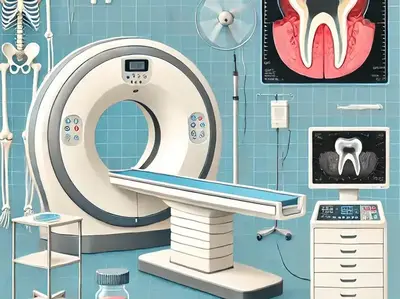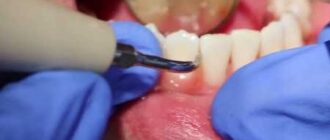Jaw bone cancer, while relatively rare, is a serious condition that requires a well-informed approach for early detection and effective treatment. Understanding its symptoms and the importance of early intervention is crucial for improving patient outcomes. This article takes a detailed look at the symptoms of jaw bone cancer, incorporating the latest statistics and insights from medical research.
Prevalence and Context
Jaw bone cancer falls under the broader category of head and neck cancers. In the United States, head and neck cancers account for about 4% of all cancers, with jaw bone cancer being a much smaller subset. Recent studies indicate that the incidence rate of jaw bone cancer is approximately 1 in 200,000 individuals annually. Most cases are found in adults aged 40 to 60, with men slightly more at risk compared to women, often due to occupational hazards and certain lifestyle factors.
Though rare, the importance of recognizing jaw bone cancer cannot be overstated, as early diagnosis greatly influences prognosis. The five-year survival rate for jaw bone cancer is around 65% when caught early, but this drops significantly if the cancer has spread to other parts of the body.
Key Symptoms to Watch For
The symptoms of jaw bone cancer can often be subtle, overlapping with other dental or oral health issues. However, some specific signs warrant further investigation by a healthcare professional:
- Persistent Pain or Discomfort: Chronic pain in the jaw or surrounding areas that does not respond to conventional treatments may be an early sign of cancer. This pain may be sharp or dull and is often mistaken for a dental issue.
- Swelling or Lumps: Visible swelling along the jawline, or lumps that can be felt beneath the skin, are warning signs. Approximately 30% of diagnosed cases reported swelling as the first noticeable symptom.
- Difficulty Chewing or Swallowing: Jaw bone cancer can lead to restricted movement, causing difficulty in chewing or swallowing. Patients might also notice an unusual clicking or grinding sensation.
- Numbness: A sensation of numbness or tingling in the lower lip or jaw is another symptom that should not be ignored. This occurs when tumors compress nerves, affecting sensation.
- Loose Teeth Without Obvious Cause: Teeth that become loose without clear reasons like injury or gum disease are a potential red flag for underlying bone issues, including cancer. Around 20% of patients noted unexpected tooth mobility before their diagnosis.
- Visible Ulcers or Lesions: Open sores or persistent ulcers in the mouth that do not heal over several weeks should be evaluated, especially if they are accompanied by other symptoms listed above.
Medical Situations and Practical Examples
One well-documented case involved a 52-year-old man who initially reported consistent pain in his jaw, which was initially misdiagnosed as a tooth abscess. After several rounds of antibiotics without relief, imaging studies revealed a tumor in the mandibular bone. Unfortunately, delayed diagnosis resulted in the cancer spreading, underscoring the importance of prompt and thorough evaluation when standard treatments fail.
In another instance, a 45-year-old woman reported numbness along her lower jaw, which persisted for three months. The dentist referred her for imaging, revealing an osteosarcoma—an aggressive form of bone cancer. Her prognosis improved significantly due to early detection and intervention.
Stats
Diagnostic Approach
Diagnosis of jaw bone cancer typically involves a combination of imaging techniques such as X-rays, CT scans, and MRI. PET scans are also employed in advanced cases to determine metastasis. Here is a summary of the estimated costs associated with each diagnostic tool in the United States:
| Diagnostic Tool | Average Cost (USD) |
|---|---|
| X-ray | $150 – $200 |
| CT Scan | $500 – $1,500 |
| MRI | $1,000 – $5,000 |
| PET Scan | $3,000 – $6,000 |
These costs vary based on location and healthcare facility. It is essential for patients to consider these expenses as part of the diagnostic journey, although these figures can vary significantly by state and institution.
Modern Trends in Treatment
Treatment for jaw bone cancer usually involves surgery, radiation therapy, or a combination of both. Surgical removal of the tumor remains the gold standard, especially when cancer is localized. In cases where the tumor is inoperable, radiation is employed to shrink it, often followed by surgery. The cost of surgery for jaw bone cancer can range from $15,000 to $40,000, depending on the complexity and stage of the tumor.
Recent trends show increased interest in targeted therapies and immunotherapy for advanced cases, where traditional methods are insufficient. Clinical trials are also exploring the efficacy of combining chemotherapy with immunotherapy, although these are not yet widely adopted for jaw bone cancer.
Advice from Our Editorial Team
If you or someone you know experiences persistent jaw pain, swelling, or any of the symptoms outlined above, seeking a timely evaluation by a healthcare professional is vital. Early detection is the key to a better prognosis. Remember, advocating for your health and seeking second opinions when symptoms persist despite treatment can make all the difference. If you notice unexplained changes in your oral health, act early—it could save your life.
Jaw bone cancer, though rare, presents challenges that require vigilance and informed decision-making. Stay proactive, consult healthcare professionals, and be persistent in seeking answers when symptoms do not resolve.






